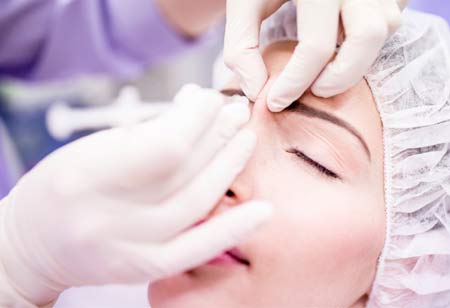Thank you for Subscribing to Healthcare Business Review Weekly Brief

Where Science Meets Beauty: The Medical Aesthetics Industry
Healthcare Business Review
Through this article, Roger Kapoor, Senior Vice President at Beloit Health System, explores the evolving landscape of medical aesthetics, where cutting-edge technologies are reshaping patient care and treatment outcomes. He discusses the latest advancements, from high-intensity focused ultrasound (HIFU) and radiofrequency micro-needling to the rise of multi-platform devices that combine laser, RF, and ultrasound for customized treatments. He also highlights the increasing focus on patient safety, personalized care, and the demand for natural, subtle enhancements.
Kapoor further examines the future of the industry, touching on regenerative aesthetics, AI-driven diagnostics, nonsurgical body contouring, and eco-friendly innovations that prioritize sustainability without compromising results. He concludes by emphasizing how the integration of science, technology, and artistry is pushing medical aesthetics into an exciting new era—one defined by continuous innovation, enhanced safety measures, and a more patient-centered approach to beauty and wellness.
The medical aesthetics industry continues to transform with technologies and techniques leading to better results for patients and their skin. The entire spectrum of therapy continues to benefit from advancements such as laser and radiofrequency systems to injectables that are more effective, accessible and safer.
Technologies in the medical aesthetics industry can now stimulate collagen and enhance skin texture, all with minimally invasive and even non-invasive approaches. This is an outstanding advancement, as results previously achievable only through surgical techniques can now be realized with cutting-edge devices, such as high-intensity focused ultrasound (HIFU), radiofrequency (RF) micro-needling, and hybrid fractional lasers.
Another exciting innovation to recognize is the rise of multiplatform devices. These devices give providers the opportunity to tailor further treatments by selecting a few modalities that could benefit an individual in a single encounter. Take, for example, a device that allows treatment with laser, RF, and ultrasound, which would offer a client the benefits of skin rejuvenation, fat reduction, and even cellulite treatment, all in one visit.
“Devices are transforming the patient-provider relationship, technology is making the impossible possible and artistry and science have never been more integrated. With a field enveloped in continuous innovation, an increased emphasis on safety and a shift toward patient-centered care, the future of our field has never been more promising”
Of course, as our treatments evolve, so does our focus on safety. Several regulatory bodies, such as the Food and Drug Administration (FDA) in the United States and the Conformite Europeenne (CE) in Europe, play essential roles in evaluating new technologies, especially in the context of at-home devices. At-home devices have come a long way and are now equipped with consumer-grade technologies that can be accessed with unparalleled convenience. However, these devices also present novel risks for clients that stem from improper use, such as burns, pigmentation issues or suboptimal results.
As an industry, perhaps one of the most promising trends in medical aesthetics is the focus on personalized treatments. Since no two individuals have identical skin, an emphasis on developing customized treatment plans for clients based on their unique goals, facial structure and aging process has the potential to lead to the most previously unachievable results.
This potential is now pushing the demand for ever-increasing “natural” results. Most clients no longer seek dramatic transformations but more subtle and refined enhancements that buttress authentic features. “Organic” type devices are being sought in this effort. In other words, techniques that stimulate our body’s ability to enhance outcomes, such as collagen induction therapy, platelet-rich plasma (PRP) and even nonsurgical skin tightening, are growing in popularity.
So what’s next? I suspect the medical aesthetic industry will only continue to outdo itself! Here are a few ways it is positioned to do so:
• Regenerative Aesthetics: As briefly mentioned above, harnessing our own bodies’ ability to jump-start our aesthetic journey will only get better with time. Techniques on the horizon include stem cell therapy, exosome-based treatments, and bioactive molecules that can be integrated into not only skincare but also aesthetic procedures to advance long-term skin health.
• AI: Yes, AI can reshape and possibly revolutionize aesthetics by driving diagnostic precision and more customized treatment plans. The AI Road of revolution is sprinkled with possibilities such as AI-driven imaging that can identify unique pigmentation, fine lines or other emerging concerns to even the development of ultra-personalized treatment plans that can be tracked over time with unmatched precision, ensuring that treatments not only feel good but deliver.
• Body Contouring: Non-surgical body contouring devices are only getting better. Cryolipolysis (fat freezing), radiofrequency-assisted lipolysis (fat melting), and electromagnetic stimulation (muscle and fat toning) are additional tools on the belt of practitioners that aim to sculpt, refine and shape a client’s body without surgery. As these devices continue to evolve, we are seeing enhanced results with a continued reduction in downtime.
• Eco-Friendly Devices: We are seeing aesthetic industry manufacturers begin to widen their apertures to include environmental considerations during development. For example, companies are starting to incorporate biodegradable materials, energy-efficient devices and techniques to minimize their carbon footprint, such as reduced-waste packaging, all to put new action behind their eco-friendly mission. Keep your eye out for more rechargeable, low-energy, recyclable devices and applicators that will continue to shift this trend toward more sustainability and energy-efficient technologies.
Overall, being part of the medical aesthetic industry is fascinating. Devices are transforming the patient-provider relationship, technology is making the impossible possible and artistry and science have never been more integrated. With a field enveloped in continuous innovation, an increased emphasis on safety and a shift toward patient-centered care, the future of our field has never been more promising.









